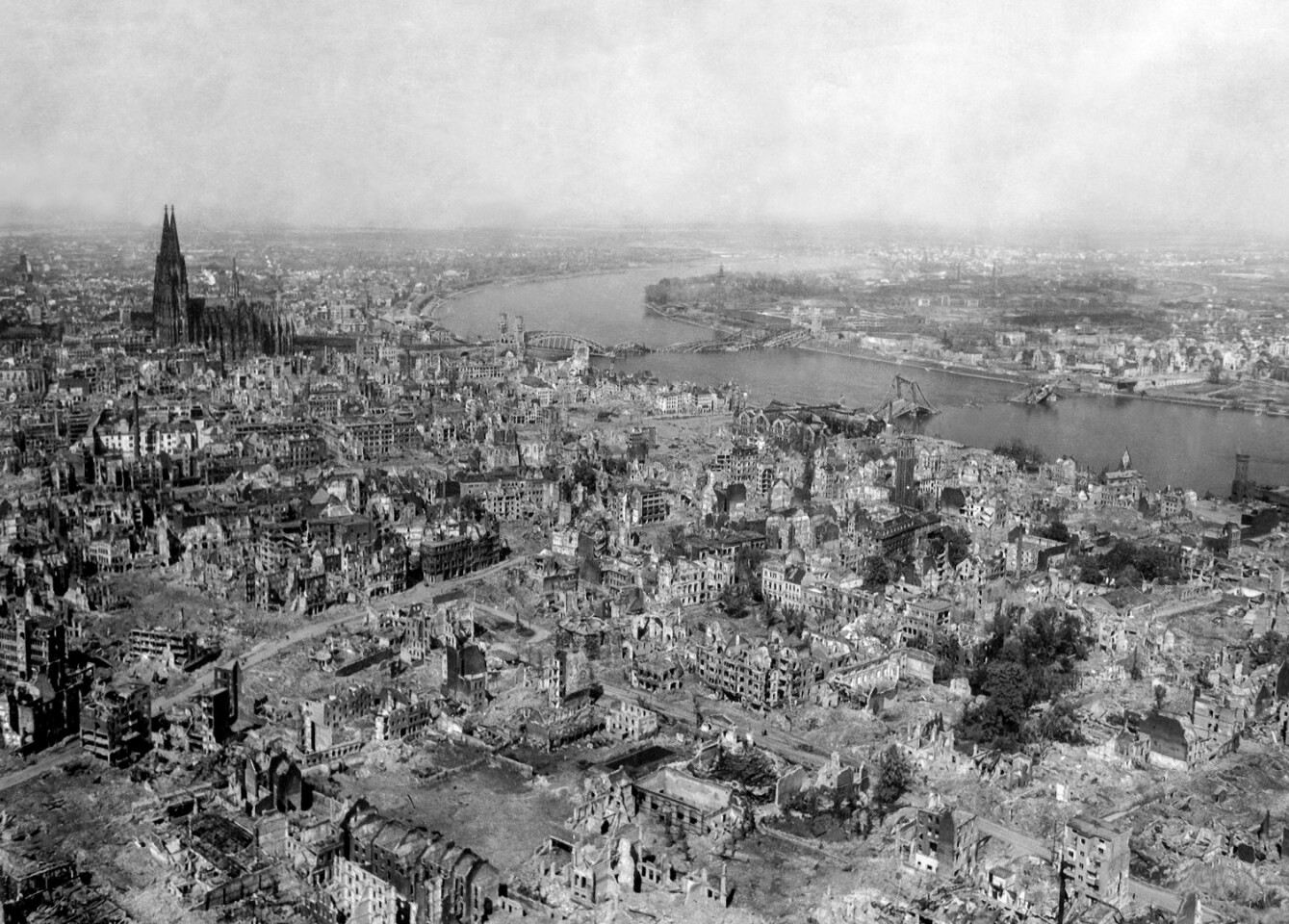A team of scientists from the University of Reading has found that the bombing raids against the Axis powers by Allied forces during the Second World War were so intense that their effects were detected on the edge of space. Based on British atmospheric studies conducted during the war, the study shows that bombs dropped on Europe weakened the ionosphere over the UK hundreds of miles away.
There was once a small comfort in the fact that no matter how horrific wars on Earth may be, they are confined to the very small area of man's domain. If one could move even a relatively small distance away, then the squabbles of the human race become as remote and easy to ignore as a battle between two ant colonies.
Now, science shows that even the pre-nuclear arsenals of the Second World War had effects much more far-reaching than previously suspected – effects so great that they may one day help us better understand how lightning, volcanoes, earthquakes, and other natural events affect the Earth's upper atmosphere.
The Allied bombings of Germany and the other Axis countries was so intense and devastating that many cities suffered far worse damage and far higher casualties than even the Japanese cities of Hiroshima and Nagasaki, which were ground zero for the first atomic bomb attacks. In all, the American and British forces in raids composed of up to a thousand bombers dropped over three million tonnes (3.3 million US tons) of bombs with a force that mimicked that of nature.

"The images of neighborhoods across Europe reduced to rubble due to wartime air raids are a lasting reminder of the destruction that can be caused by man-made explosions," says Chris Scott, Professor of Space and Atmospheric Physics. "But the impact of these bombs way up in the Earth's atmosphere has never been realized until now.
"It is astonishing to see how the ripples caused by man-made explosions can affect the edge of space. Each raid released the energy of at least 300 lightning strikes. The sheer power involved has allowed us to quantify how events on the Earth's surface can also affect the ionosphere."
The evidence of this impact wasn't on the battlefield, but back in England at the Radio Research Centre in Slough, where scientists in 1943 to 1945 were conducting experiments on the structure of the ionosphere – the layer of tenuous ionized air that marks the edge of space beginning about 100 to 300 km (62 to 186 mi) above the Earth.
These experiments involved bouncing shortwave radio impulses off the ionosphere by shooting them straight up and then using the return signal to measure the layer's height and electron concentration. Ironically, this research was a continuation of the pioneering experiments that led to the invention of microwave radar, which gave the Allies a strategic advantage over the Germans.
It was already known that solar activity could affect the ionosphere, which in turn can affect radio communications, radar, and other technologies. But what the Reading team found was a correlation between the time of 152 large Allied bombing raids and a decrease in electron concentration over Slough. According to the team, a similar effect was not seen during the German Blitz by the Luftwaffe against British cities and airfields, because the attacks were around the clock rather than intermittent like the later Allied raids. In addition, the Allies used bombs that weighed as much as 10 tonnes (11 tons) each, compared to the smaller German bombs.
"Aircrew involved in the raids reported having their aircraft damaged by the bomb shock waves, despite being above the recommended height," says Patrick Major, University of Reading historian. "Residents under the bombs would routinely recall being thrown through the air by the pressure waves of air mines exploding, and window casements and doors would be blown off their hinges. There were even rumors that wrapping wet towels around the face might save those in shelters from having their lungs collapsed by blast waves, which would leave victims otherwise externally untouched.
"The unprecedented power of these attacks has proved useful for scientists to gauge the impact such events can have hundreds of kilometers above the Earth, in addition to the devastation they caused on the ground."
The team is currently asking the public to help in digitizing the wartime records, to expand the study and calculate the minimum explosive energy needed to affect the ionosphere.
The research was published in the journal Annales Geophysicae.
The video below discusses the effects of the bombings on the ionosphere.
Source: European Geosciences Union






